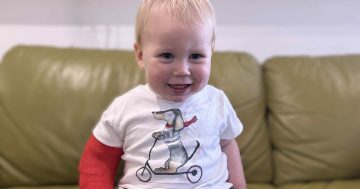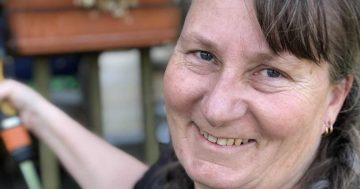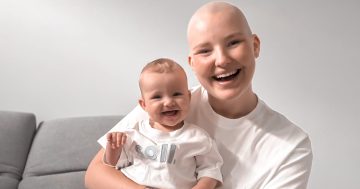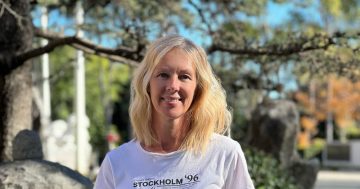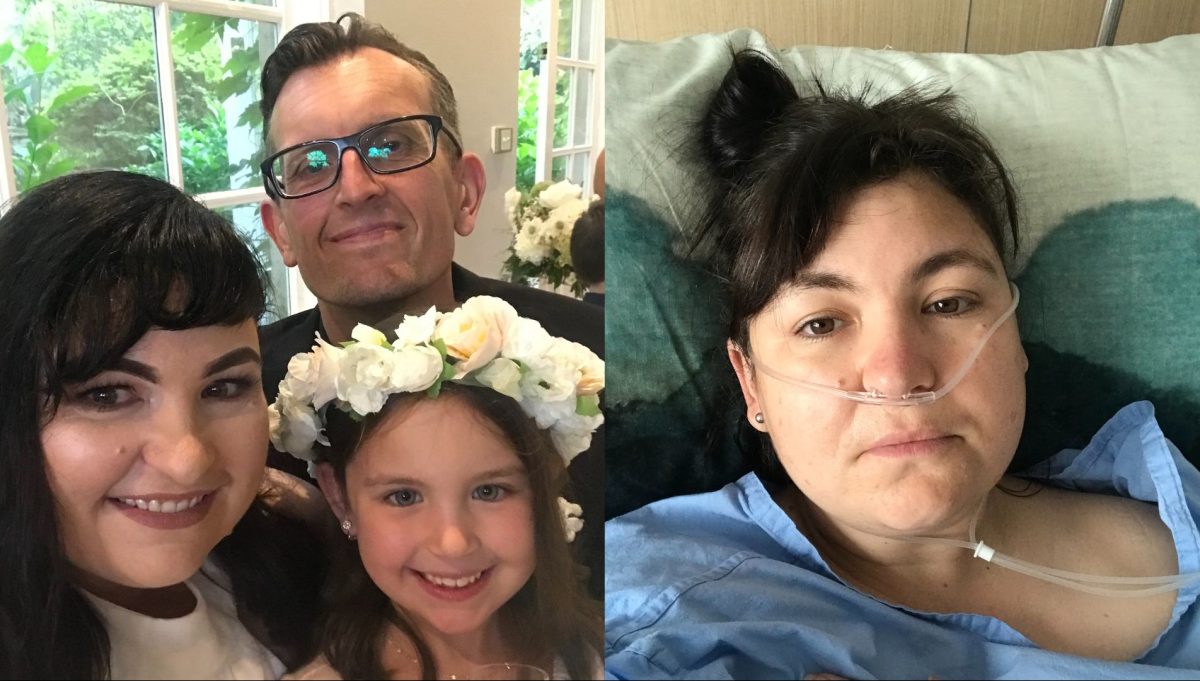
Liz Depers spent decades searching for a solution to her ongoing pain. Photos: Supplied.
A Figtree mum and fierce advocate has finally found some relief after living in pain for decades as she was dismissed or misdiagnosed by doctors while battling both endometriosis and adenomyosis, reducing her quality of life and even putting her at risk of losing a kidney.
Liz Depers first started noticing something wasn’t right just after she finished school in the late ’90s when she started suffering from painful, heavy, irregular and debilitating menstruation.
After seeking medical advice from her general practitioner, it was advised she go on birth control to manage her symptoms, without any exploration into the underlying causes.
“I tried a few different types of birth control, the pill and the depo-provera injection and then of course what happens with those is there’s a number of side effects and some mood imbalance and it’s not a very pleasant experience,” Liz said.
“So I sort of went off everything for a little while and just kind of sucked it up because ”it’s just a period” and ”everyone gets these”.
A few years later, she moved to Bathurst to study and once again tried to find some answers.
But after being referred to a gynecologist to undergo a laparoscopy, not only was she told everything was fine, but that the way to ease her symptoms would be to give birth to a child.
“I was 21, at university and living away from home for the first time and told to have a baby to fix my pain and problems,” she said. “Myself and my partner were both quite flabbergasted at that response.
“It’s not something you can give someone as a solution and then take it back – that’s a life-changing decision.”
Liz found herself going through the same cycle of trying birth control and experiencing severe mood changes and depression before attempting to manage by using pain medication.
Around 2012, her symptoms worsened and as she started to, once again, push for further investigation, she fell pregnant and everything was put on hold.
She said her pregnancy was pretty straightforward, but after she gave birth, all her severe symptoms returned so she sought advice from another GP.
“I honestly thought I was going to be told there was nothing wrong with me when my doctor said that the internal ultrasound had identified something called adenomyosis.”
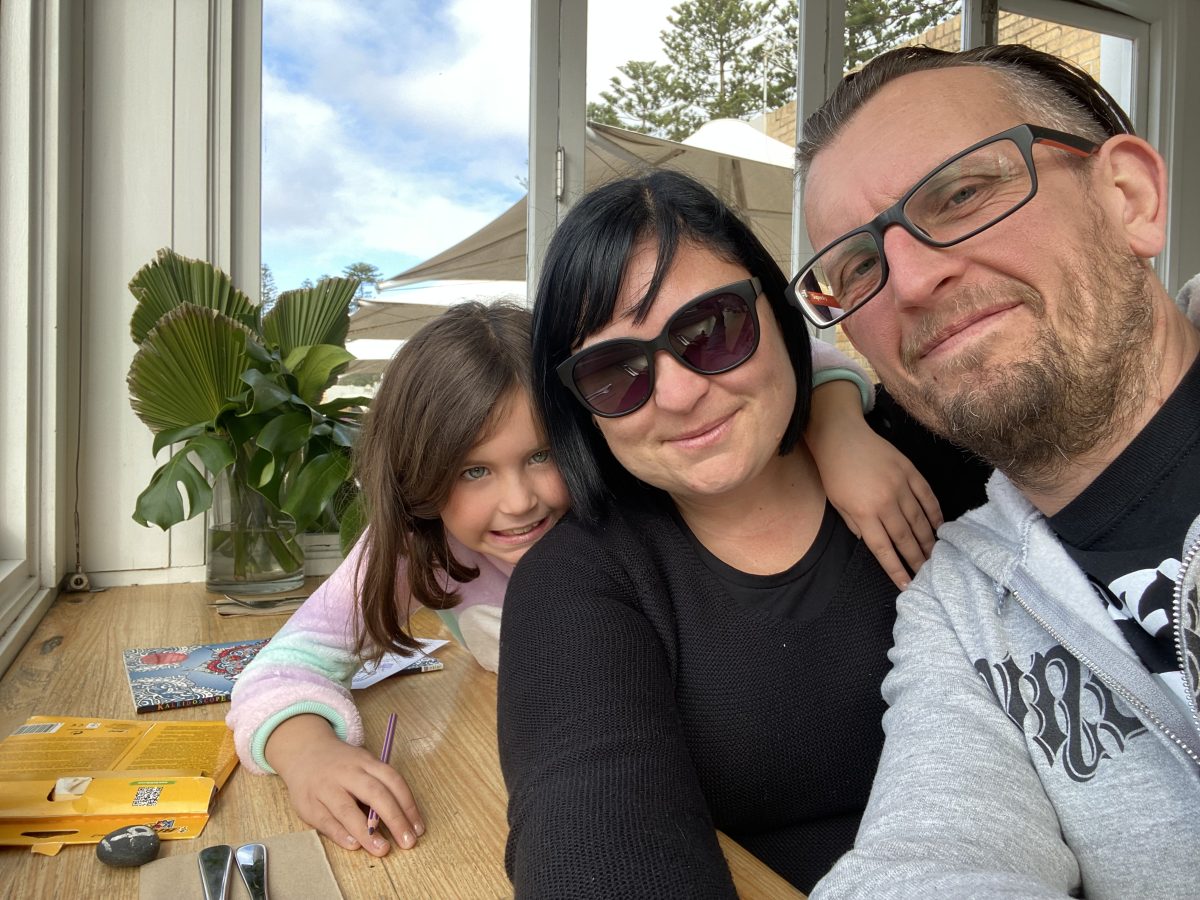
Liz’s chronic pain impacted her whole life and family.
She was referred to a Wollongong gynecologist to manage her adenomyosis, which is similar to endometriosis but involves the tissue growing into the lining of the muscular wall of the uterus rather than outside of it.
After being offered the IUD (another birth control solution) to ease symptoms, Liz questioned whether she should be investigated for endometriosis, which has a similar presentation to adenomyosis and can often come hand-in-hand.
After her gynecologist was unconcerned, she sought a second opinion and was officially diagnosed with endometriosis in 2014, almost two decades after first experiencing symptoms.
”What I learned along the way was not all gynecologists are equal when it comes to endometriosis and if it’s not something that you see all the time, then you’re not familiar with the different presentations of it,” Liz said.
“It was one of those things where it got to the point where I just feel like I’m going mad because everybody tells me there’s nothing wrong but I know that this isn’t right.”
Liz underwent endometriosis surgery but continued to have pain and renal issues. The complex nature of this saw her referred to another gynecologist specialist in Sydney where she received further major surgery to remove the problematic tissue.
“It resulted in them slicing my ureter from my kidney to my bladder and cleaning it out and having to have a stent in place so when it grew back it wouldn’t close over,” she said.
“From what I’ve heard, if it went undiagnosed and untreated, I could’ve lost a kidney.”
Liz later had concerns about symptoms appearing in her chest and the possibility of diaphragmatic or cardiothoracic endometriosis, which was explored by a team of specialists when she decided to undergo a hysterectomy in 2019 at the age of 38 to manage the symptoms of her adenomyosis.
“I thankfully didn’t have any diaphragmatic perforation so the decision was made not to go into my chest cavity to explore for endometriosis in the chest cavity, just because the risks outweighed any benefits.”
Despite previously being a cynic, Liz started receiving treatment for her ongoing pain by a reputable doctor and acupuncturist in Sydney and now is finally experiencing some relief.
“Five years down the track and I’m physically pretty active again, I don’t have pain, I have an improved quality of life,” she said.
“It’s been a long journey to get here.”
Although there has been a shift towards a better acknowledgement of the disease throughout the past decade, Liz said more needed to be done in terms of research, funding and community awareness to ensure people weren’t slipping through the cracks or suffering in silence.
“If people aren’t aware that it’s such an issue, then they’re not going to advocate and seek out a second opinion,” she said.
“They’ll just think it’s something that just happens to everyone and ‘suck it up’.”
She also would like to see attitudes change so that more people realise that it impacts more than just fertility and can affect anybody, regardless of gender identity, sex assigned at birth or current reproductive organs.
”Yes, it can impact people’s ability to have children but it’s so much more than that, it’s a whole-body disease.
”There’s been instances where it’s been found in the brain, in the cardiothoracic cavity, the pericardium; it’s more than what just happens in the uterus – that’s just where a lot of the symptoms manifest.”
To find out more about endometriosis or to seek support, visit the Endometriosis Australia website.











